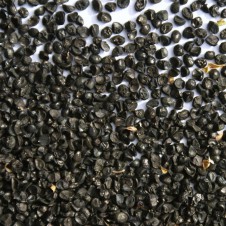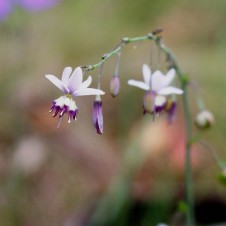General Description: A slender, grass-like tufted perennial herb, to 1 m tall, with narrow, slightly fleshy, dark green leaves and pale purple or pink flowers on slender, drooping stalks. Crushed flowers smell like vanilla.
Flowers and Fruit: Pale purple or pink, star-shaped, to 15 mm wide, in groups of 2-9. Flowers from November to February. Fruit is a round, 3-chambered capsule, containing small, black seeds.
Site Preference and Tolerances: Deep loamy soils of forests in high rainfall areas or moist clay soils. Grows well in part shade.
Life Span: Leaves die down to dormant fleshy tuberous rootstock during the dry season, after flowering, and commence regrowth following autumn rains.
Wildlife Value: Flowers are used by a range of insects.
Other Values and Uses: Aborigines roasted the tubers for eating. Can be used to create an attractive effect by mass plantings or creating informal drifts. Suited to container growing. Can grow from seed or divide the tuberous rootstock to create new plants.
Other Scientific Names: Anthericum milleflorum, Arthropodium milleflorum s.l., Arthropodium paniculatum
Germination Information: Sow seed in Autumn and should have good results in one to two months.


